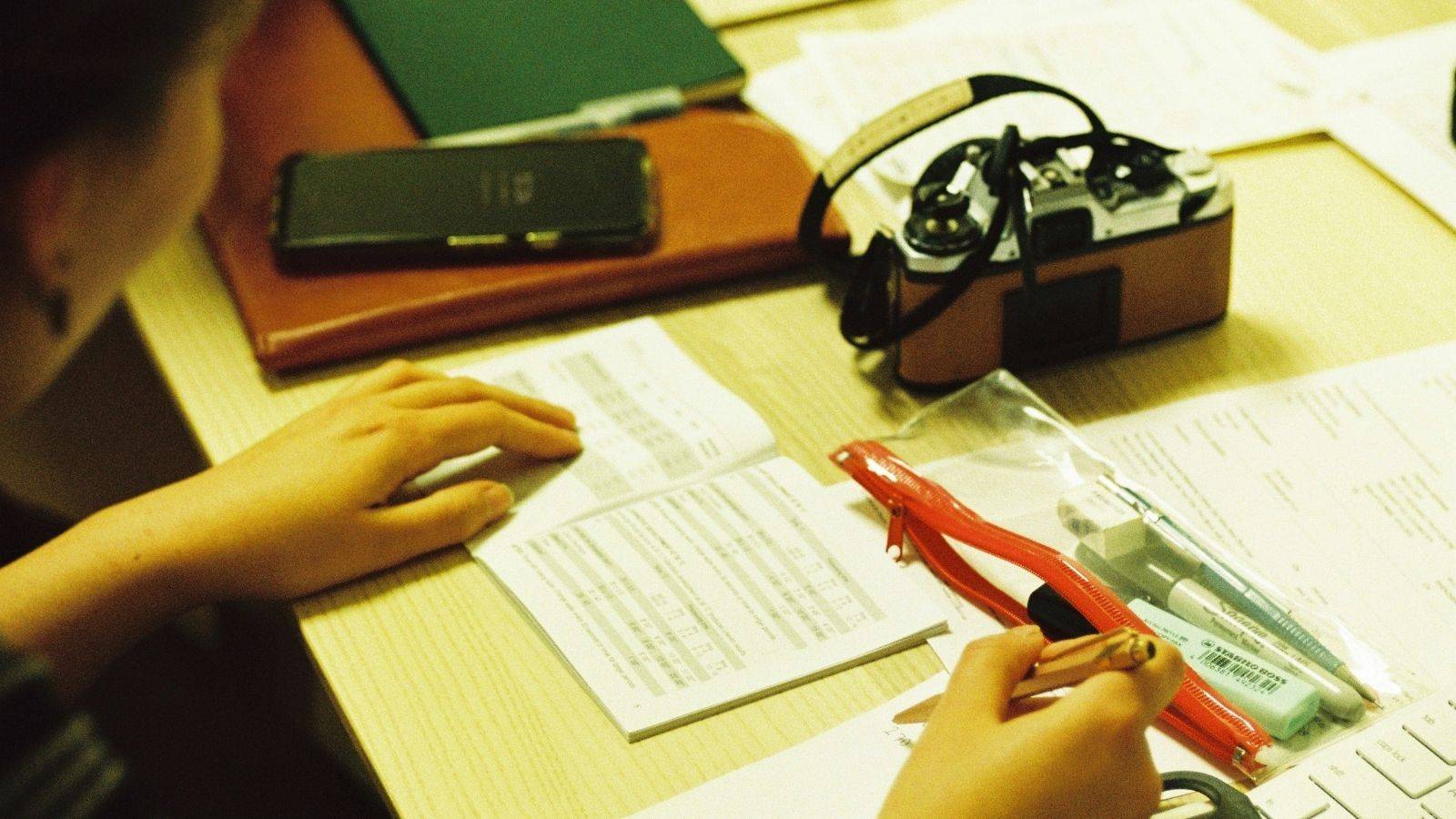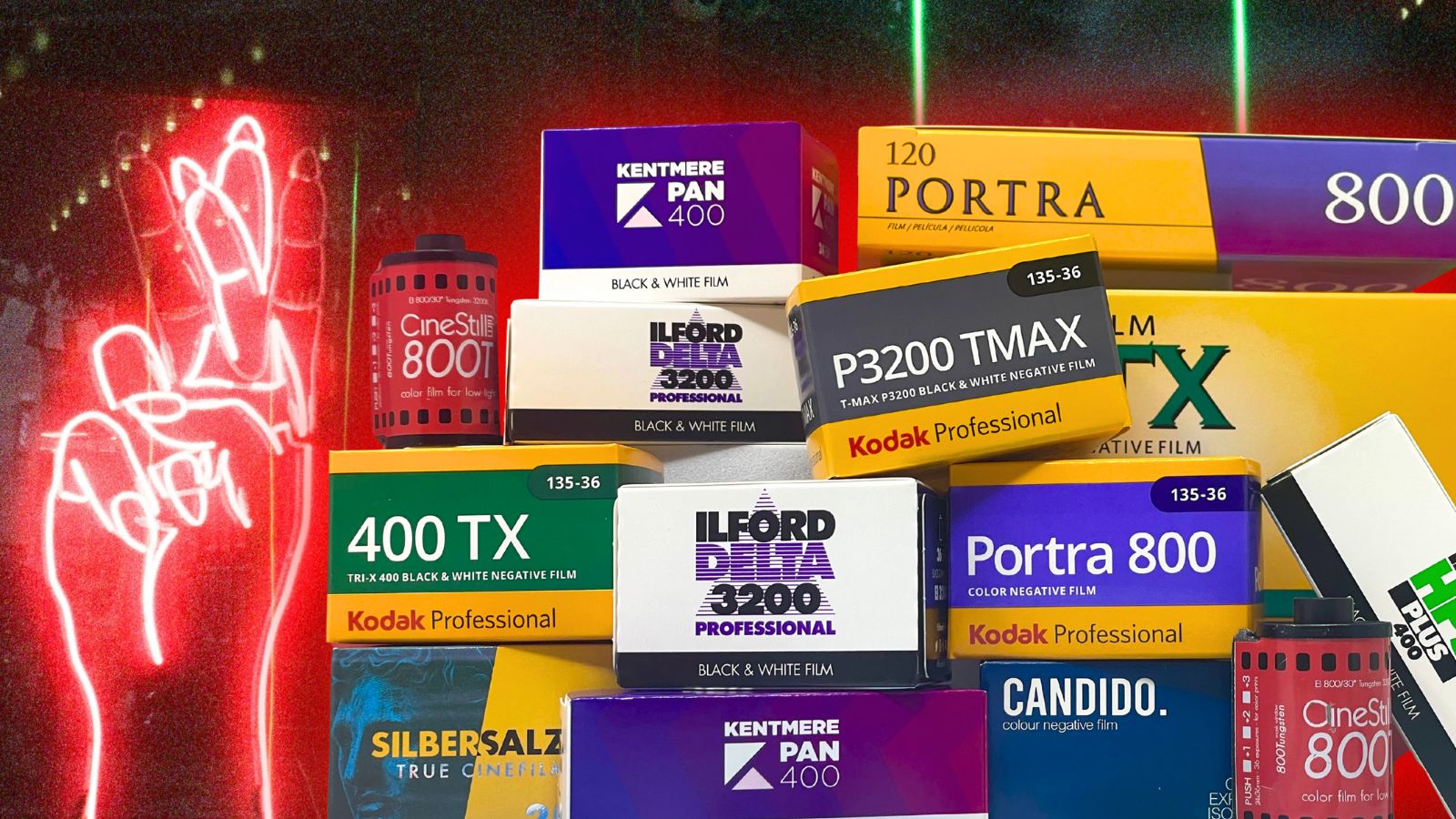Shorter days and darker nights doesn't mean fewer photo opportunities! We asked the Analogue Wonderland Instagram community to share their favourite films for shooting after dark - from tungsten-balanced colour to gritty black and white classics. Here are your top five picks for low-light photography.

WonderLab Update - the final steps...
By Paul McKay
Hey Siri, turn on a countdown...
00
:00
:00
:00
As you might have seen from our recent social media, over the past couple of months we've been running tests on all various lab chemistries, machinery, website software, warehouse logistics and courier systems 😰
This has been stressful, fun, challenging and interesting in equal measure 😂 but has put us in a great position to offer a fantastic developing service from the first day of the Analogue WonderLab full opening.
And that day is nearly here...
So I wanted to pause for a moment and share an update on what you're going to see when the WonderLab opens next week. Particularly on our key priorities: sustainability ♻️ Organisation 📚 and Community 👨👩👧 Enjoy!
1. Sustainability ♻️
We laid out our detailed intentions in a past article that you can read here, and I want to review our progress with you and share what you can expect at launch. Before I dive into details, a quick reminder that there are two stages to our plans:
Stage One - launch the WonderLab with all the best practices from labs around the world while guaranteeing top quality dev and scan results for our customers from day one!
Stage Two - push the boundaries of technology, partnerships and new ideas to improve on those best practices - over the coming weeks, months and years
So, how are we doing so far - specifically against the intentions laid out in our original article?
- We will recommend from the beginning on sending the films to the lab in a more sustainable way. This simply means that customers will be encouraged to reuse the boxes they already have and not to use plastic when sending them - Yes! Please do re-use Analogue Wonderland boxes or similar if you can - they're build to survive multiple trips through the postal system 💪🏼
- Use chemicals that contain components with the lowest possible level of toxicity. This means using chemicals that are free of hydroquinone, metal and sulphites - we're using Kodak Xtol for B&W which is an ascorbic-acid based film developer so is lower-impact than many. However it does still contains sulphite so the next step is to source and rigorously test other options in the market. There's a very promising formulation made by a company in the US, but it will need fully checking with all films here in the WonderLab before we are able to recommend for customers' films. It may be that we can move some films to this developer faster than others - the next few months will tell.
- Create a system in which plastic film pots, 120 spools, and disposable cameras are returned to the production line. (This is going to be a tricky one but I know it is not impossible) - conversations are ongoing! In the meantime we are separating everything that comes to us back into individual components for local re-use, local recycling, or temporary storage until the conversations are finalised.
- Degrade the toxicity of the waste chemicals as much as possible before they are sent to a responsible disposal company. (Ideally I would love to be able to do this process in the lab and reuse the chemicals for something else but... I don't know if that's feasible yet, I hope so) - accounts set up with a verified responsible disposable company. We're also attending a workshop in November specifically designed to assess how much chemical waste dilution or disposal can be brought 'in-house' for greater control and oversight
- Use fixers made from sodium thiosulphate instead of ammonium sulphate - currently using ammonium hyposulphite - we're also testing sodum thiosulphate fixers against each emulsion but are not yet ready to recommend. Similar to the developer in point two, it may be that some emulsions can be moved to the new fixer sooner than others - the next few months will tell.
- Extending the life of the fixer by silver recovery. This silver recovery process could extend the life of the fixer by up to three times. That's more than 100 films that can be fixed without the need for the fixer to be discarded as soon as it is completely exhausted! - Our initial plan wasn't workable due to the required machine size from current set-ups 😢 However we have an ongoing project with Sustainable Darkroom to better understand their research and see how it can be reapplied on an appropriate scale (there are promising early tests with electrolysis!)
- Use more respectful packaging when shipping orders. It should be from recycled sources and be recyclable or biodegradable. This includes envelopes for negatives, negative sleeves and large envelopes for larger prints - Yes all good, with exception of negative sleeves - we can't get the volume at present on rolls as needed, as soon as our supplier can get it sorted we'll make the switch
In summary: it is work-in-progress! Some elements have been as straightforward as hoped, some are taking longer than expected, and some still need new research from scratch.
But our focus on this topic remains super-strong, and we're relishing the long-term challenge of the work 😊
2. Organisation 📚
To do a good job with organisation we need to ensure that our community can say YES to a few simple questions
1. Is it easy for you to find and choose the right developing and scanning service that you need?
2. Is it easy for you to buy films AND processing services at the same time?
3. Is it easy to access the free tracked service to send in your films for processing?
4. Do you receive your films and scans quickly and accurately, every time?
Of course there are lots of things we need to do behind the scenes to ensure that we do a great job on everything here. Frankly lots of it is mundane website code / warehouse layout / paperwork and systems work - so I'm not going to bore you with the details (image compression protocols anyone?) 😂
But I'm very geekily excited about the new website that will be going live in line with colour processing next week - fast, simple, easy - and I hope that you'll enjoy it too!
3. Community
'Community' is the hardest priority to work on before the full lab comes online - as this can only come to life when you're sending in your films, chatting to the lab team, seeing everything in action, and also we can start running competitions, giveaways, exhibitions and more with your amazing work!
But I hope that you've already seen us share a huge amount of photos, videos and more from behind-the-scenes as we have built the WonderLab - and that this has helped you understand how we will look after your films and your photography over the coming years.
If you ever need to ask a question or understand more about the work the WonderLab works then please reach out!
Not only do we have the usual contact options for Analogue WonderLand, but the lab also has a specific email address help@analoguewonderland.co.uk for direct contact with the team there.
And to close out this little update, let's see some of my favourite images of that team - from their top secret test film shoots 😂😂😂😂😂
Happy shooting!!
- the Analogue Wonderland team
Ready to dive in?
Keep Reading
View all
Eastman Kodak Releases KODACOLOR 100 & KODACOLOR 200 35mm Films: But What Are They?
Eastman Kodak has released two 35mm films: KODACOLOR 100 and KODACOLOR 200. But what do they look like, are they truly new emulsions, and what could this mean for the future of colour film now that Eastman Kodak has entered the still photography market alongside distributor Kodak Alaris?

Best Films for Autumn Film Photography: Top Tips for Capturing The Season
Autumn is a magical season for film photography, bringing rich colours, atmospheric weather, and unique tones and textures that we can bring to life with a range of film stocks. Whether you're capturing the natural colours of fall or prefer moody monochrome, we've got film recommendations and shooting tips to help you photograph the season beautifully.
Subscribe to our newsletter 💌
Sign up for our newsletter to stay up to date on film photography news, sales and events:
Free Tracked Shipping
On all UK orders over £50
Passion For Film
An unbeatable range and an on-site lab
Our Customers Trust Us
Thousands of independent 5* reviews
All Deliveries are Carbon Neutral
Independently audited and verified by Planet
- Opens in a new window.




